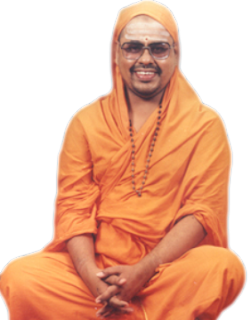Gita
essays – 4
Lord
Krishna observed in His concluding remarks on karma yoga that one who follows karma-yoga attains
spiritual success and one who does not is spiritually lost. Arjuna now has a
doubt as to why people do not follow karma yoga even when they know that karma
as yoga uplifts leading to liberation, while as mere karma it is binding one to
samsara. So he asks a question
generalising this paradox as a problem of choosing between punya and papa. His
question runs as (3-36):
अथ केन प्रयुक्तोऽयं पापं चरति पूरुषः। (Atha
kena prayukto’yam paapam charati poorushah)
अनिच्छन्नपि वार्ष्णेय बलादिव नियोजितः।। (Anicchann api vaarshneya balaad iva niyojitah)
अनिच्छन्नपि वार्ष्णेय बलादिव नियोजितः।। (Anicchann api vaarshneya balaad iva niyojitah)
Oh Krishna! Prompted by what, does a person commit sin,
even against his wishes, as though he is constrained by force?
“Everybody knows what is
right and what is not right, what is good and what is bad. Yet when it comes to
action why some people invariably choose the wrong?” is the question. In the context of Lord’s advice the question
can be rephrased as “What is the obstacle to the
pursuit of karma yoga; in spite of knowing its superiority; what prevents
people from following karma yoga?” Lord
Krishna has earlier stated that raga-dveṣha (likes and dislikes) born of vasanas (habits)
pull a person astray and now Lord amplifies the statement and goes to the roots and says
that the preventing factor is kama-krodha (desire-anger) born of the quality of
Rajas. When
a person's desire is not gratified or thwarted, it turns into anger against
those whom he sees as obstacles and so anger can also be classified as a
variation of desire. When the quality of Rajas is dominant, a person is
constrained to seek satisfaction of his desires and that becomes the dominant
motive overriding other considerations. If the intellect is infected by the virus of
desire one loses his discrimination and has no qualms of conscience to make
compromises with higher values. Therefore Sri Krishna says desire is the man's
greatest enemy on the earth because man commits sin only at the command of
desire against his will and better judgment and desires are insatiable and
cannot be completely satisfied, as one fulfilled desire fuels another. One can get rid of this virus only through
the constant practice of detachment.
Desires fall under three
categories Satvic, Rajasic and Tamasic. Of these Satvic
desires veil the discrimination just as smoke envelopes fire. The veiling is thin and hence it requires only
a little effort to remove it, like the rise of the slight wind dispelling the smoke. For the Rajasic
desires where intellect is covered by desire prompted agitations, the example given
by Lord is one of dust on a mirror. Dust
blocks completely the reflection in a mirror and requires more time and effort
for removal and it is the same way with the efforts for the removal of the dirt
of Rajasic desires from the mind. In the case of a Tamasic desires higher virtues are shut out by baser instincts as
in the case of a foetus in the womb covered with amnion fluid. As the covering can be removed only after
lapse of a definite period of time the low desires can be removed only after a
longer period of spiritual efforts by the Tamasic
person.
Lord also diagnoses senses,
mind and intellect as the seat of desires.
The sense organs transmit the stimuli received from the objects of
enjoyment to the mind which working in close collaboration with the intellect
starts living in the experience of sense enjoyments and nourishes further
desires. So the problem is to be tackled at source i.e at the level of senses,
mind and intellect itself. This is done
through the control of senses, mind and intellect through sama, dama and viveka. Sama is control of senses. Dama
is control of mind and viveka is
discrimination. Through sama one takes
care to filter the external stimuli that enter the mind. Through dama
one exercises control over the thoughts as thoughts initiate action. Through viveka
one acquires the wisdom that any amount of acquisitions will not add to
security and that desire
oriented agitations are an impediment to one’s personal spiritual experiences as
well as to one’s acquiring spiritual knowledge through the study of scriptures.
The last two verses (42&43) that conclude the third chapter of Gita reveal
the superiority of Self, Atma, over senses, mind and intellect and the final
step in anger-control as Self-knowledge,
Athma Jnanam.
इन्द्रियाणि पराण्याहुरिन्द्रियेभ्यः परं मनः। (Indriyaani paraanyaahur
indriyebhyah param manah)
मनसस्तु परा बुद्धिर्यो बुद्धेः परतस्तु सः।। (Manasastu paraa buddhir yo buddheh paratastu sah)
मनसस्तु परा बुद्धिर्यो बुद्धेः परतस्तु सः।। (Manasastu paraa buddhir yo buddheh paratastu sah)
They declare that the senses are
superior (to the body); superior to the senses is the mind; superior to the
mind is the intellect; and one who is superior even to the intellect is He—the
Self.
एवं बुद्धेः परं बुद्ध्वा संस्तभ्यात्मानमात्मना। (Evam
buddheh param buddhwaa samstabyaatmaanam aatmanaa)
जहि शत्रुं महाबाहो कामरूपं दुरासदम्।। (Jahi shatrum mahaabaaho kaamaroopam duraasadam)
जहि शत्रुं महाबाहो कामरूपं दुरासदम्।। (Jahi shatrum mahaabaaho kaamaroopam duraasadam)
O Arjuna! Thus, knowing Him who is
superior to the intellect and restraining the (lower) self by the (higher) Self, slay thou, the
enemy in the form of desire, hard to conquer!
---------------------------
